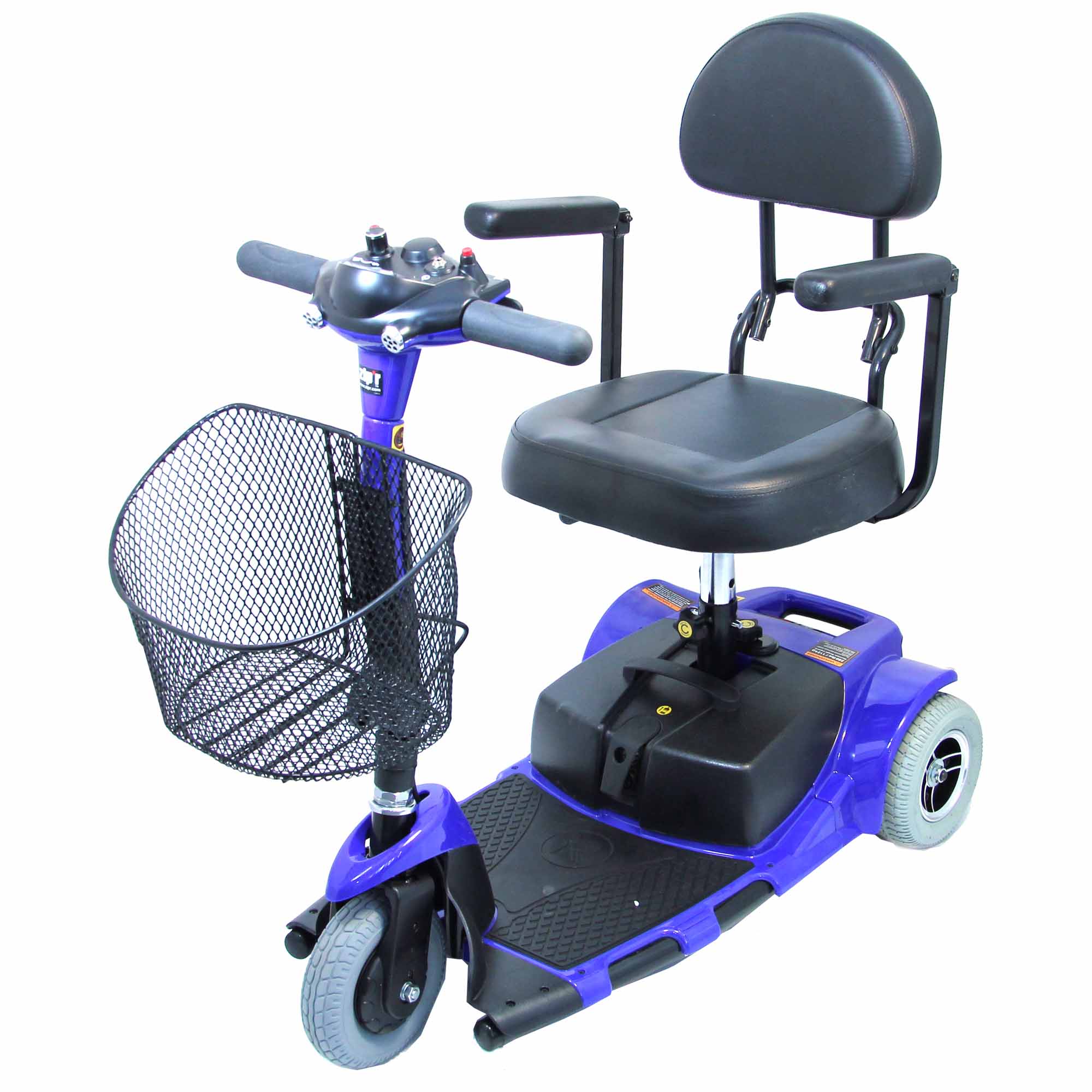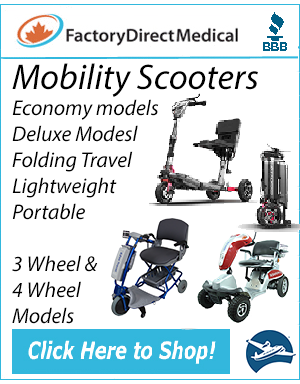Mobility Scooter User Tips
Below are a series of tips that will make the use of a mobility scooter safer and easier for users.
Mobility Scooter Tips
- Having a bright orange flag will make the mobility scooter user more visible in traffic and parking lots. (Available at most bicycle shops for a low price)
- Mobility scooter batteries that are used a lot have longer life spans than those that sit idle for most of the day or used only rarely.
- Batteries in power mobility scooters that aren't being used for a period of time should be charged up about once a month to keep them active.
- Keep air inflated tires fully inflated to ease rolling of the mobility scooter, lengthen the time needed between battery charges, maximize mileage and maximize tire and tube life spans.
- Added care must be given wheel a mobility scooter is used on slippery surfaces. The automatic mobility scooter brakes may not slow or stop the scooter if they don't have proper traction.
- If a mobility scooter stops working for any reason the brakes will automatically engage. To push the scooter there will be a brake release mounted mounted somewhere near the rear of the scooter that will disengage the brakes. (The scooter will not work with the brakes disengaged.)
- Mobility scooter have a high center of gravity and can tip over sideways easily. Users should only drive up and down an incline and not across the incline.
- Scooter baskets are not designed to carry heavy weights. Place heavy objects on the floor of the scooter between the user's feet.
- Use caution when traveling on sand or in snow. The scooter can get stuck fairly easily leaving the user stranded in unsafe conditions.
- If possible, adjust the tiller so the user can rest their elbows on the armrests when driving to reduce fatigue and shoulder strain.
- Three wheeled scooter work better in tight areas due to their shorter turning radius.
- Four wheel scooters are a little more stable than three wheel scooters and better outdoors.(But not a lot)



 Online Vendors
Online Vendors  US Online Vendors
US Online Vendors 



